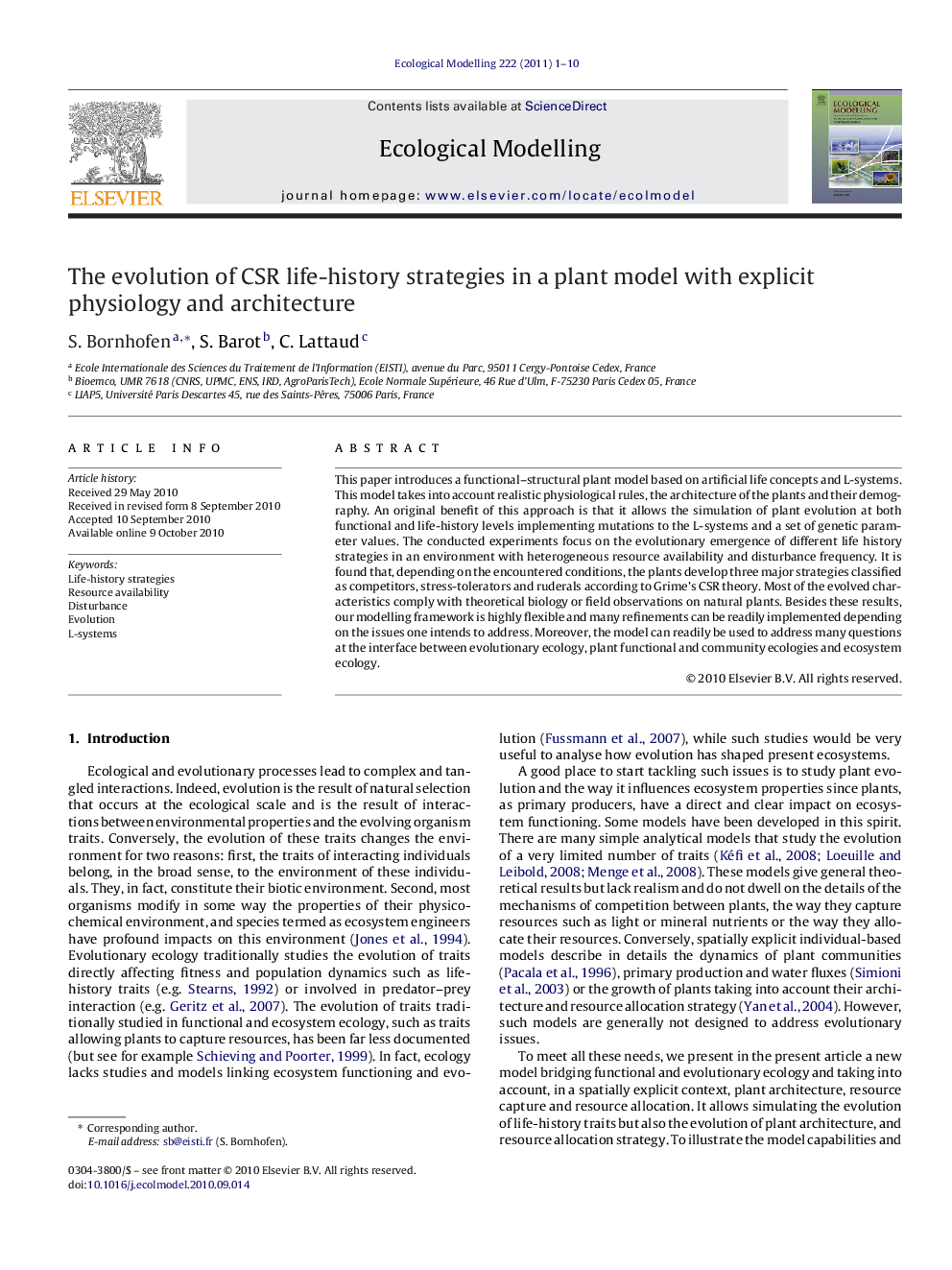| Article ID | Journal | Published Year | Pages | File Type |
|---|---|---|---|---|
| 4377159 | Ecological Modelling | 2011 | 10 Pages |
This paper introduces a functional–structural plant model based on artificial life concepts and L-systems. This model takes into account realistic physiological rules, the architecture of the plants and their demography. An original benefit of this approach is that it allows the simulation of plant evolution at both functional and life-history levels implementing mutations to the L-systems and a set of genetic parameter values. The conducted experiments focus on the evolutionary emergence of different life history strategies in an environment with heterogeneous resource availability and disturbance frequency. It is found that, depending on the encountered conditions, the plants develop three major strategies classified as competitors, stress-tolerators and ruderals according to Grime's CSR theory. Most of the evolved characteristics comply with theoretical biology or field observations on natural plants. Besides these results, our modelling framework is highly flexible and many refinements can be readily implemented depending on the issues one intends to address. Moreover, the model can readily be used to address many questions at the interface between evolutionary ecology, plant functional and community ecologies and ecosystem ecology.
